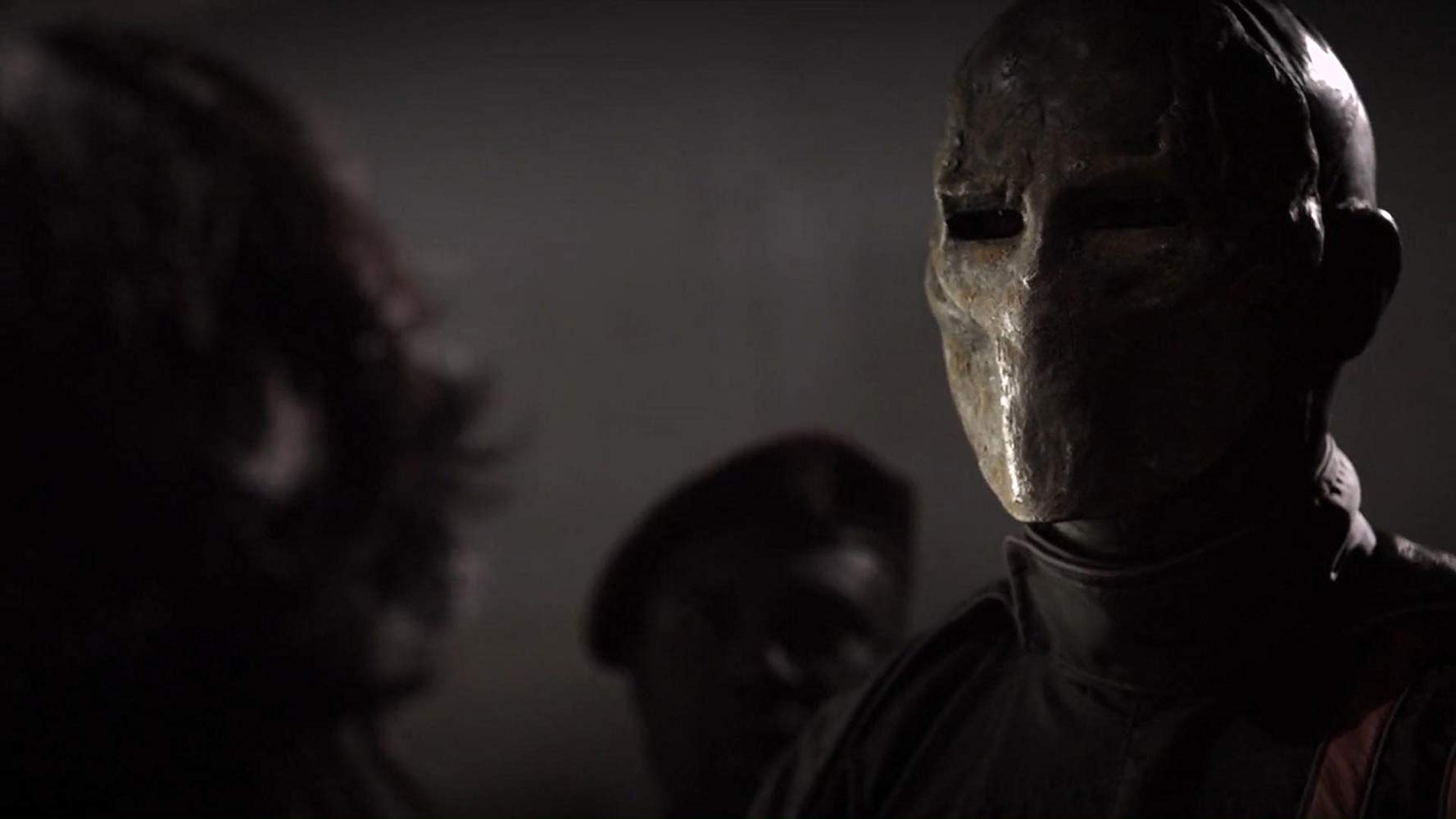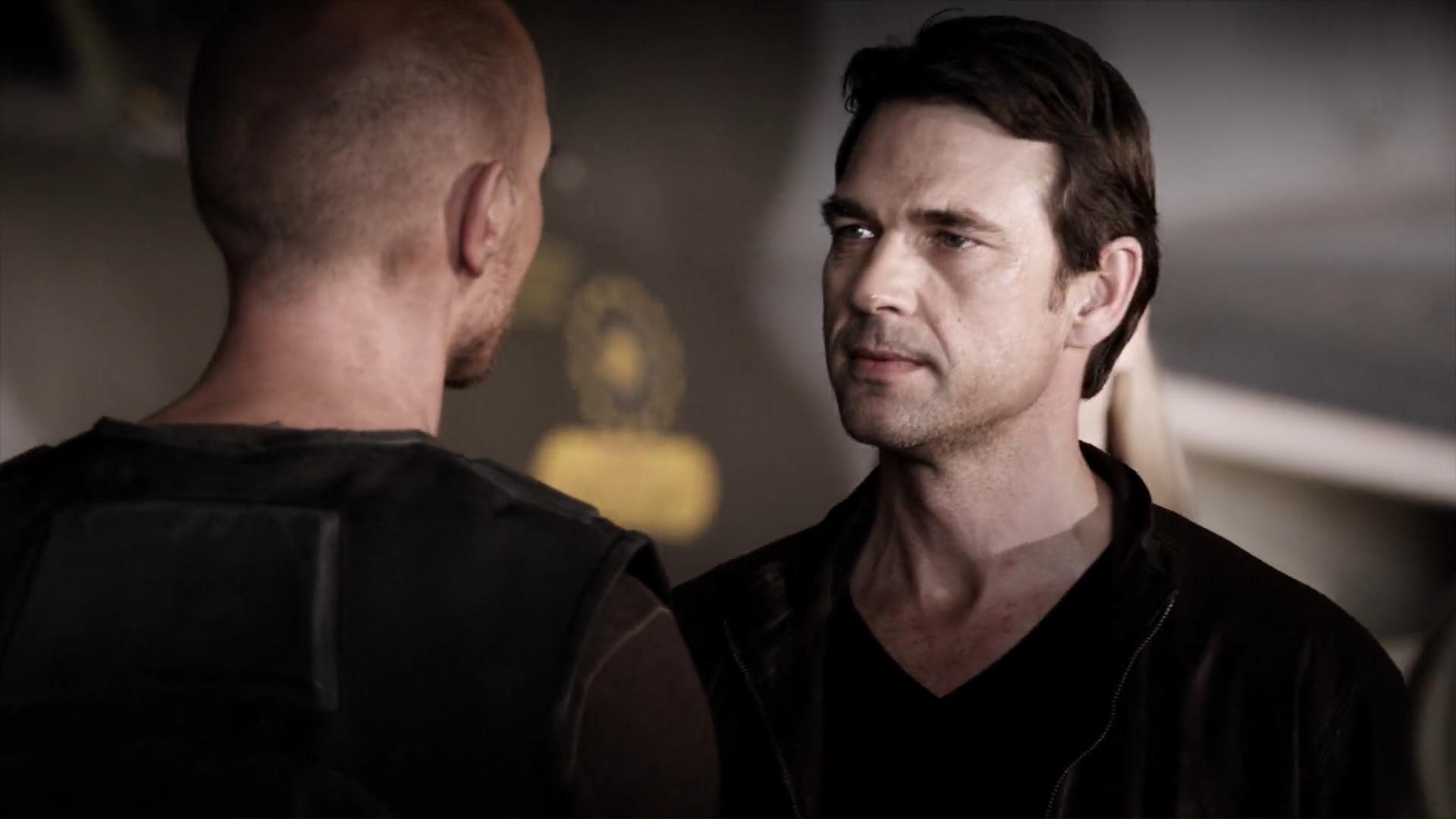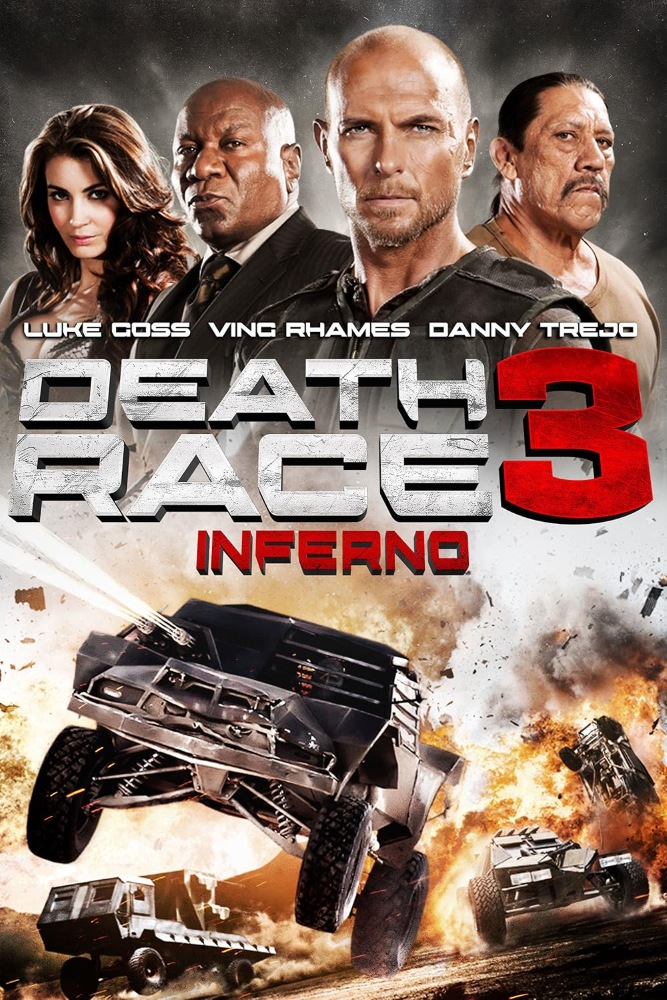South Africa/Germany. 2012.
Crew
Director – Roel Reiné, Screenplay – Tony Giglio, Story – Paul W.S. Anderson & Tony Giglio, Producers – Paul W.S. Anderson, Jeremy Bolt & Mike Elliott, Photography – Wayne Shields, Music – Trevor Morris, Visual Effects Supervisor – Gary Oldroyd, Visual Effects – Assembly Line, Special Effects Supervisor – Cordell McQueen, Production Design – Andrew Orlando. Production Company – Universal Germany/Moonlighting/Impact Pictures/Chestnut Ridge.
Cast
Luke Goss (Carl Lucas/Frankenstein), Dougray Scott (Niles York), Tanit Phoenix (Katrina Banks), Danny Trejo (Goldberg), Ving Rhames (R.H. Weyland), Fred Koehler (Lists), Hlubi Mboya (Diabolos), Robin Shou (14K), Roxanne Hayward (Prudence), Bart Fouche (Razor), Jeremy Crutchley (Psycho), Eugene Khumbanyiwa (Nero), Michelle Van Schaik (Olga Braun), Micheal T. Dube (Baby Face), Ebby Weyime (Maria Rodriguez), Tanya Van Graan (Amber)
Plot
The Weyland Corporation is acquired in a hostile takeover by billionaire Niles York who plans to export the Death Race to different locations around the world. Carl Lucas is told by York that he is now operating under a new agreement and if he does not participate in the new Death Race and lose then he and his friends will be killed. He, Goldberg, Katrina and Lists are shipped to a prison in the Kalahari Desert in South Africa. The others are shocked to learn that Carl is not dead as they believed and feel betrayed. The Kalahari Desert death race begins with Carl going back into action as Frankenstein up against a new range of competitors.
Death Race 3: Inferno is the third film in the series begun with Paul W.S. Anderson’s Death Race (2008). Death Race, starring Jason Statham as a racing driver sentenced to a futuristic prison where he must compete in a deadly motorised vehicle race/tournament for cable tv audiences, was a moderate success in theatres. It in itself was a remake of the earlier David Carradine starring Death Race 2000 (1975), which played the idea as a black comedy with a trans-American road race where points are won by running people over.
Death Race was spun off with Death Race 2 (2010) where the lead was taken over by Luke Goss playing what in the first film had been the minor supporting role of the masked Frankenstein (the name of David Carradine’s character in Death Race 2000), while the directorial reins were taken up by Dutch director Roel Reiné. Roel Reiné, Luke Goss and a number of the supporting cast from the previous film – Danny Trejo, Ving Rhames, Tanit Phoenix, Fred Koehler and Robin Shou – make return appearances here. This was followed by a further sequel Death Race: Beyond Anarchy (2018), hile Roger Corman subsequently went on to conduct his own remake of the original with Death Race 2050 (2017) independent of these films.

Death Race was okay for what it did; although one didn’t think it a particularly great film. Death Race 2 felt unnecessary – it seemed to only be copying what had gone before but was at least propelled by some good action scenes from Roel Reiné and Luke Goss did a worthwhile job of stepping into the lead role. By the time of Death Race 3: Inferno, it feels that we have a series that is buckling under the strain of having to make the concept extend to three films. All three films are trapped in a limited plot – tight-lipped hero must triumph in a vehicular race being held inside a prison by a corrupt governor where the rules of the game are constantly being stacked against him. Death Race 3 has precisely zero to add to this. All it can think to add to the mix is to hold the Death Race out of doors in the desert – in various South African locations (where the second film was also shot).
I looked to this new location as holding some potential; unfortunately, it rapidly becomes apparent that the conception fails in execution as all we end up with is watching a variety of trucks racing around sand dunes and shantytowns and occasionally blowing one another up. This is something that proves incredibly monotonous and repetitive. The dynamic possibilities as an action director that Roel Reiné. demonstrated in the opening sequence of Death Race 2 or in The Scorpion King 3: Battle for Redemption (2012) from earlier in the year are nowhere in evidence. I suppose that Death Race 3: Inferno ended up being exactly what I expected of it – but did it have to be so dull?
The other problem I had with Death Race 3: Inferno was its skewed moral rewriting. All three films work on very simplistic black-and-whites. They play into the cliches that almost all prison films do – a decent loner who is either innocently convicted or has conducted some wrongdoing they must earn forgiveness for is placed up against a corrupt system run by an evil warden, which the hero (and those on his side) gets to symbolically bring down.

I don’t have a problem with these particular black-and-whites. It is more that the Death Race films have to skew the characters to make their point. We are supposed to forget by the point of this film that all of the good guys are hardened criminals in a maximum security penitentiary – it is almost impossible to believe the character of Lists who is played as the wet-eared innocent kid as being any type of hardened criminal, for instance.
Each film needs to keep coming up with a new evil warden for the heroes to fight against. Death Race 3 offers up Dougray Scott who barnstorms his way through some great evil in the opening scenes (although this eventually only becomes a very one-dimensional role). However, for him to be so blackly villainous, Ving Rhames’s Weyland who was on the side of the villains in the last film has to be rewritten as one of the good guys. In the absurdly improbable twist ending, we even get Rhames’s Weyland, along with Luke Goss and his friends, engaged in an elaborate scheme to frame Dougray Scott – which transpires as something akin to the fantastically improbable capers of an Ocean’s Eleven (2001) film. There is at least a sardonically black end comeuppance twist that allows the film to go out on a nasty sting.
Roel Reiné began making films with an action bent in the Netherlands and entered genre material with his third effort Drifter (2008), going onto the other genre likes of Deadwater (2008), Bear (2010), The Lost Tribe (2010), The Scorpion King 3: Battle for Redemption (2012), Dead in Tombstone (2013), The Condemned 2 (2015), The Man with the Iron Fists 2 (2015), Hard Target 2 (2016), Dead Again in Tombstone (2017), Fistful of Vengeance (2022) and Savage Hunt (2025). He has also produced the low-budget horror films Blackwater Valley Exorcism (2006), Brutal (2007) and Wolf Town (2010).
Trailer here


